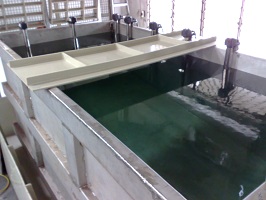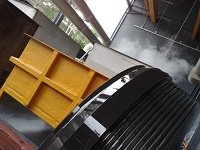 Phosphate conversion is the treatment of metals with acidic phosphate
solutions. This process converts the metal
surface into a phosphate coat.
Phosphate conversion is the treatment of metals with acidic phosphate
solutions. This process converts the metal
surface into a phosphate coat.The phosphating process produces a nonmetallic, oil-absorptive coating on iron and steel surfaces.
Benefit of such coating are as follows:

Types of Phosphate Coatings
1. Zinc Phosphate (3 to 5 microns thick, light gray in colour)
2. Manganese Phosphate (4 to 10 microns thick, dark gray in colour)